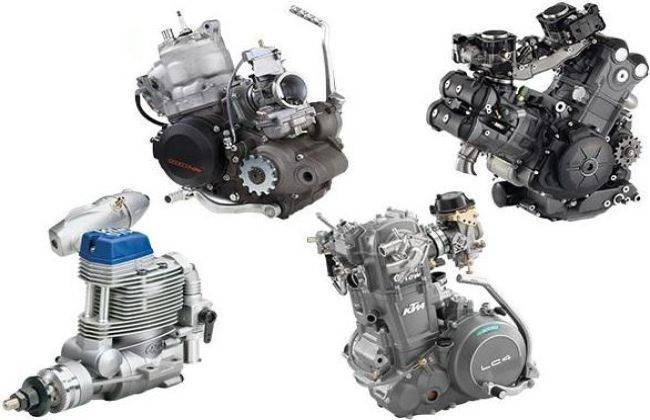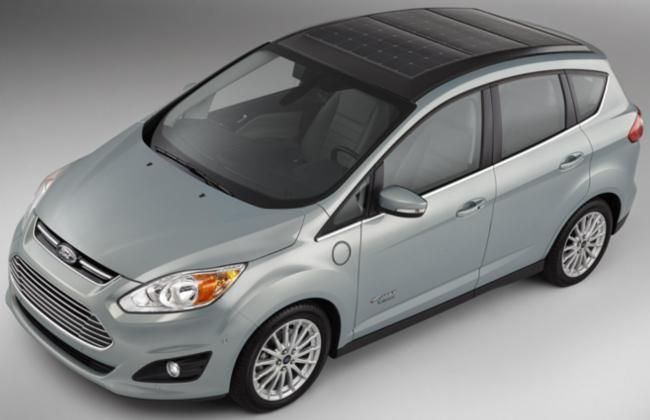Technical Aspects: Engine Classification
Modified On Apr 06, 2016 07:24 PM By Sahib
- Write a comment

Engines are classified under different categories based on number of strokes, number of cylinders, orientation of cylinders, type of ignition, type of fuel injection etc. Various types of engine and their technical aspects are discussed below:
Based on number of strokes:
1. Two Stroke Engine:
Two-stroke engine is light in weight with higher power-to-weight ratio as compare to four stroke engine. It produces power stroke after each revolution of the crankshaft.
First stroke: Piston moves up to compress the air/fuel mixture, at the same time intake port is opened which allows fresh mixture to move in the lower part of crankcase. Transfer port helps in moving this fresh mixture from the lower portion to the top of the piston.
Second stroke: This stroke is a combination of power and exhaust strokes.The piston moves down after power stroke, opening the exhaust port at the same time to move burnt gases out of the combustion space.

2. Four Stroke Engine:
The four strokes involved are intake, compression, combustion (power) and exhaust. Four-stroke engine takes two revolutions of crankshaft to produce power.
Intake stroke: The piston moves from the top of the cylinder to the bottom of the cylinder. The intake valve opens and pressure difference forces air/fuel mixture to move from intake manifold to the combustion chamber.
Compression stroke: During this stroke, both intake and exhaust valves remain closed & the piston returns to top of the cylinder, compressing the fuel-air mixture to a great extent. In case of CI engine, only air is compressed.

Power stroke: When the air/fuel mixture is compressed to the full extent possible, spark plug fires and mixture undergoes combustion process. The resultant burnt gases forces the piston to move down with a speed which further rotates the crankshaft. In case of CI engine, there is no spark plug, only fuel is injected at high pressure by injectors into the compressed hot air and combustion takes place.
Exhaust stroke: In this stroke, the piston again moves up towards top of the cylinder while the exhaust valve is open. This action forces most of the burnt gases out of the combustion chamber while remaining burnt gases escape by their own expansion.
Based on type of ignition:
1. SI Engine (SPARK IGNITION):
In this type of engine, ignition takes place with the help of an electric spark provided by a spark plug. It usually has low compression ratio (degree upto which the air-fuel mixture is compressed within engine cylinder) due to which maximum efficiency is lower. Petrol or Gasoline Vehicles are sparking ignition engines.

2. CI Engine (COMPRESSION IGNITION):
In this type of engine, ignition takes place by means of heat generated by the compressed air inside the cylinder. These engines do not have spark plug. Right amount of pressurized fuel is injected though fuel injectors. These engines have comparatively higher efficiency due to higher compression ratio.

Based on type of fuel injection:
1. Direct Injection (DI):
This process involves the injection of fuel directly into the combustion chamber which inside the cylinder. It is an efficient way with less emissions but sound levels and vibrations are higher. This technique is commonly used in modern diesel engines.

2. Indirect Injection (IDI):
In this type of injection, fuel is injected into a pre-combustion chamber that is connected to the main combustion chamber by a narrow opening. The initial combustion takes place in this pre-combustion chamber then spreads to the main combustion chamber, thus slowing the burning process. It leads to less vibrations and noise coming out of an engine.

Based on Orientation of cylinders:
1. In-line Engine:
These engines have cylinders/pistons arranged in a straight line. This engine design is very simple with just one cylinder head and fewer moving parts.

2. V Engine:
In V engine, the cylinders are arranged in two banks set at an angle to one another (usually 60 or 900) and are attached to single crankshaft.
3. VR Engine:
The design of VR engine is very much similar to its parent V engine but the angle between two banks of cylinder is reduced from 60° to 15° so that lesser space is needed.

4. W Engine:
W engines involve a combination of two "VR banks" arranged at an angle of 72° (90° in some cases). The cylinders of one VR bank have an angle of 15° relative to each other. So overall a very efficient design to have large number of cylinders in such a smaller space.
5. Boxer Engine:
In this engine, pistons are placed horizontally on the opposite sides of the crankshaft. Very compact design as overall height of engine is significantly low. This leads to lower center of gravity that would provide better handling and performance.

6. Radial Engine:
In this engine, pistons are arranged radially in such a way that their connecting rods coupled to a central crankshaft. This configuration is generally deployed in aircraft engines and power generators.
Also Read: Technical Aspects: Engine & Its Components
2 out of 2 found this helpful










